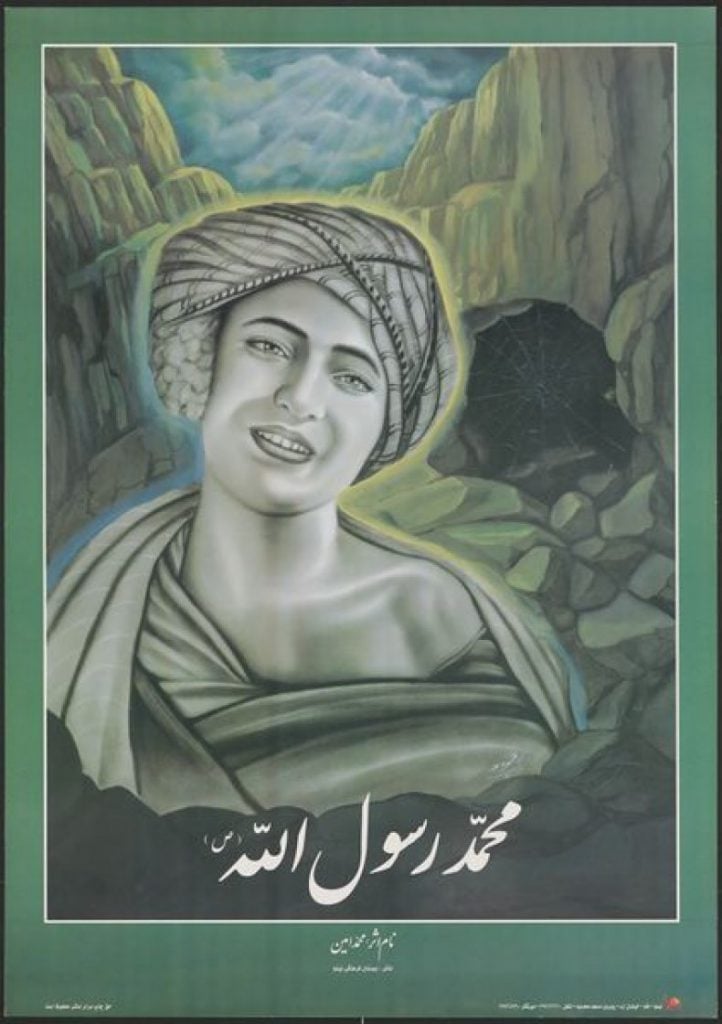Art & Exhibitions
Security Threats Force London’s V&A to Remove Prophet Muhammad Artwork
Appropriate caution or self-censorship?

Appropriate caution or self-censorship?

Lorena Muñoz-Alonso

The Victoria & Albert Museum in London has removed from its website the image of an artwork depicting the Prophet Muhammad, the Guardian reports.
The move was triggered by growing security concerns, following the terrorist attack on the satirical magazine Charlie Hebdo, which was targeted for publishing caricatures of the prophet.
Earlier this month, the V&A claimed that its collection did not include any images of Muhammad. But a U.S. expert subsequently drew attention to a poster featuring the Prophet made by an Iranian artist around 1990, which was displayed on the museum’s website.
“[The V&A] is a high-profile public building already on a severe security alert,” a spokeswoman told the Independent, explaining the museum’s decision. “The image of [the artwork] has been removed from our online database but it remains in our collection and, as with most of our reserve collections, would be made available to scholars and researchers by appointment.”
Self-Censorship?
The removal of the image has been criticized by some experts as self-censorship. They fear the study of Islamic art could be undermined by these types of decisions, which are obscuring an important part of Islam’s diverse artistic heritage. Experts also claim that images of the Prophet have been recently shown in exhibitions around world without creating disruptions or threats.
“If Muslims feel offended by images made by other Muslims out of reverence for the Prophet, I’m not sure if the museum should decide not to show them,” Mirjam Shatanawi, Islamic art curator at Amsterdam’s Tropenmuseum, told the Guardian. “It seems like choosing one interpretation of Islam over the other. These images are not made to disrespect but, on the contrary, to honor the Prophet.”
In 2013, the Amsterdam museum staged an exhibition in which an image of Muhammad made by an Iranian artist hung next to a Christian icon. “We knew it might be controversial, but decided to take the risk because the story is important to tell,” Shatanawi, told the Guardian. “These images are a real eye-opener, a powerful example of Islam being different and more diverse than many imagine.”
Approaches to this matter vary across Western institutions. Last year, Edinburgh University Library hosted the exhibition of an important 1314 Persian manuscript that contains several images of Muhammad, but none of these were included in the show. Paris’ Bibliothèque Nationale, on the other hand, showed Muhammad images in an exhibition in 2011 without problems.
The Prophet Muhammad and the Origins of Islam
The Metropolitan Museum of Art in New York currently features several images of the Prophet in its “The Prophet Muhammad and the Origins of Islam” display.
“Featured in this unit are several depictions of the Prophet Muhammad,” states the museum’s website. “These portrayals, while somewhat rare, are not unheard of as there were (and still are) many different attitudes toward depicting the Prophet, and humans in general, in the Islamic world. […] The societies that produced the works discussed here are among those that allowed the depiction of the Prophet.”
“As a historian of religion, I think it is very important to put such images on display,” Ingvild Flaskerud, expert on Shia culture at the University of Oslo, told the Guardian. “They provide valuable information about the richness of Muslim devotional life. By not displaying the images, we give privilege to certain understandings of Islam and marginalise others. This is not simply a scholastic issue; it is also a democratic matter.”
Meanwhile, while tributes to Charlie Hebdo continue in France, the Musée Hergé in Belgium had to cancel an exhibition in honor of the slain cartoonists last week, due to security concerns.